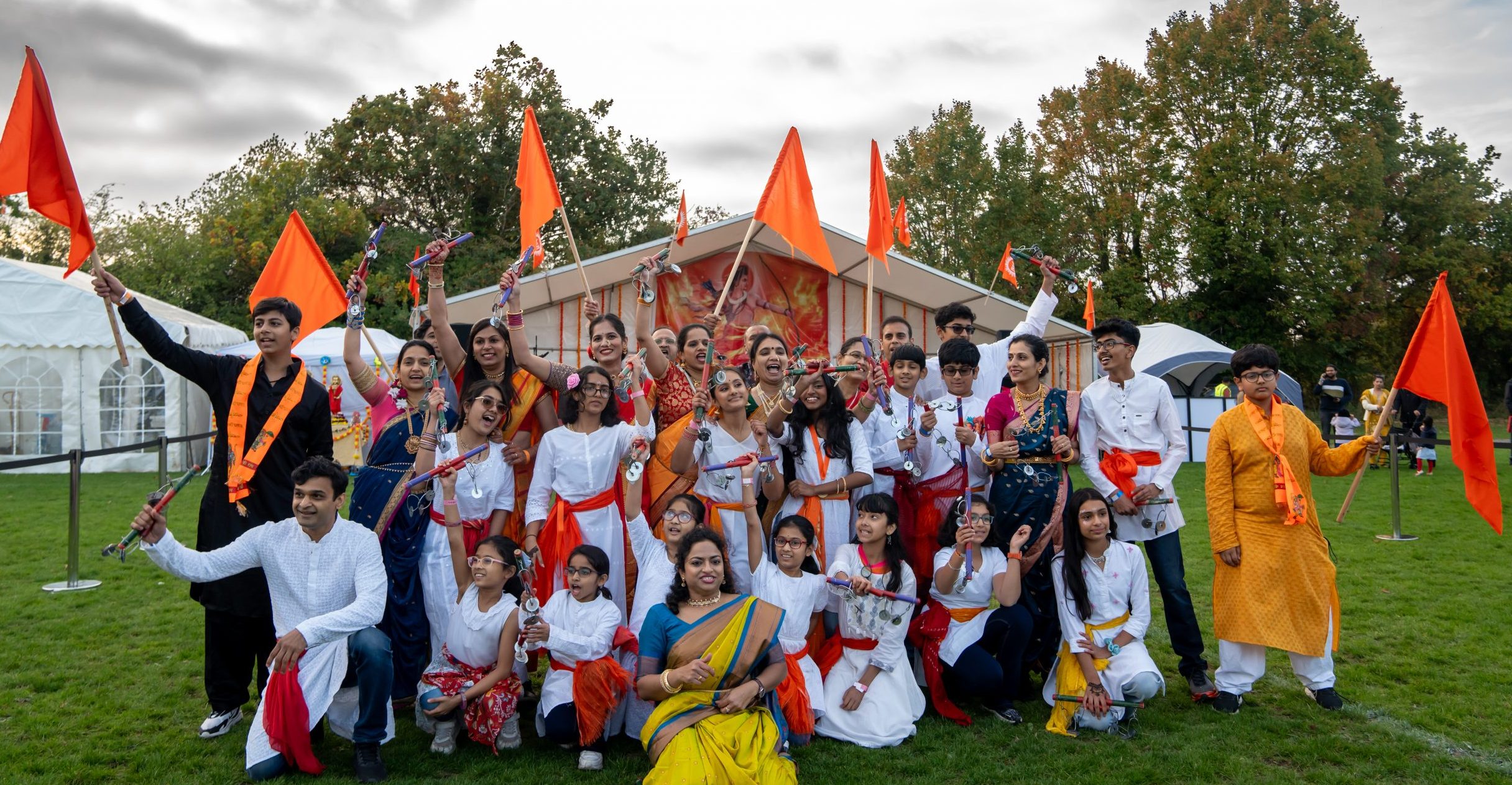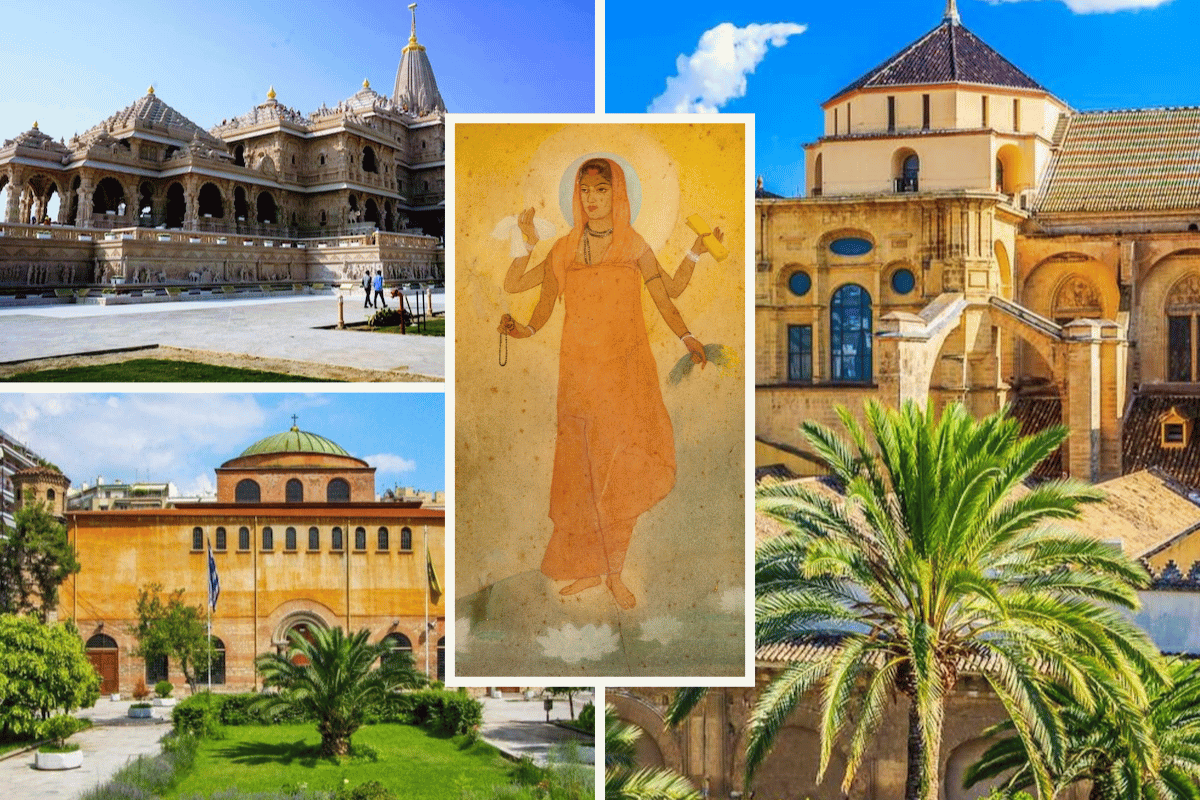
Hinduism (Sanātan Dharma) is one of the largest faith systems in the world. However, through years of oppression, foreign rule and generalised apathy under the guise of modernism, most Hindus/Indians have forgotten about their Bhāratiya (Hindu) status.

It is like forgetting to wear the innermost layer of clothing before donning any additional one. I like etymology a lot and had I not been bitten by the Science bug in my school, I would have leant myself into a career in arts and language. Therefore, understanding the fundamental naming scheme of an entity, an idea, a place, art, etc. allows me to indulge my senses and enhance my experience. Never does this become more important than when exploring the complex tapestry of Hinduism, from here on to be referred to as Sanātan Dharma.
Let’s take the word itself – Hinduism. Being the 3rd largest religion [Pew Research] in the world, it has the suffix ‘ism’ attached to it. Ever wondered why
Christianity isn’t Christianism or Islam isn’t Islamism? The Cambridge Dictionary
sheds some light on the definition of the ‘ism’ suffix, as shown below:
“Used to form nouns that refer to social, political, or religious beliefs, studies, or ways of behaving.”
The Cambridge Dictionary at least gets part of it right, it is referring to a set of
religious beliefs but, Sanātan Dharma isn’t merely about beliefs. In fact, a whole lot
of Sanātna Dharma is an actual, logical set of practices that enhance a person’s
physical, mental, and spiritual well-being, in that order. Perhaps that is one of the
reasons why Bhārata is still a living civilisation.
Coming back to the topic at hand, let’s have another look at what ‘ism’ means as a
noun, from Cambridge dictionary:
“a set of beliefs, especially ones that you disapprove of:”
It begs the question, why would this innocuous three-lettered word mean something so divisive or importantly, using it as a noun to ideas which would be disapproved?
From whom would be they disapproved? The answers lie in diving deep into colonial
history and using monotheistic ideologies in justifying these invasions but that
could be the topic of another article.
Now let’s explore the word Hindu itself. In all of the corpus of texts (also called
Content in this age of Data Science) involving Vedas (Śrutī), Smṛtī , Purāṇas,
Upaniṣada, Śāstre, Āgama Śāstre and Bhāṣye (commentaries), the word Hindu isn’t
found. This begs the question; who used it and why in the context of Bhārata? Of the
many names of Bhārata, the land of the Sapta Sindhu (7 rivers) is one of them. A
reference to these rivers occurs in the Rigveda in the 10th Mandala, 75th Sukta, 5th
Rucha:

It translates to requesting the 7 rivers Gaṅgā, Yamunā, Sarasvatī, Śutudri (current
Satluj), Paruṣṇi, Marudvṛdha (current day Kaveri/Cauvery) with Asiknī (current day
Chenab), and Vitazstā (current day Jhelum), Ārjikīya with Suṣomā.
Therefore, if our ancestors identified, named the rivers, and gave a befittingly
accurate name to the land of the 7 rivers why then was Bhārata called India or
Hindustān? Again, the answers lie in the colonial history of the land where the
Mughal invaders couldn’t pronounce (referred to as Apbhramsa in Sanskrit) Sapta
Sindhu ( the land of 7 rivers) and called it Hapta Hindu. From thereon, the word
Hindu stuck and in Persian, a large swathe of land is referred to as Stān. Therefore, a
combination of these two led to Bhārata à Hindustān, the belief system followed as
Hinduism and the people who follow it, therefore, as Hindus. Like most easy-to-pronounce words become popular, Hindu became a successor of Sanātani and
Hinduism became a substitute for Sanātan Dharma.
However, the essence and substance of Sanātan Dharma lie far beyond the implied
meaning of a set of beliefs which are intended to shake the foundations or challenge
the established basis of monotheistic faiths. From symbols to sacrifices, from colours
to clothing, from rituals to rites, from practices to provisions, from inclusivity to
ingenuity Sanātan Dharma encompasses all. Before I conclude, I’ll expound and
establish why we should use Sanātan Dharma over Hinduism. The word Sanātan
is a Sanskrit word which means Eternal. While the English language isn’t capable of
capturing the essence and true meaning of Sanskrit, it does so perfectly here.
However, the word Dharma, has no substitute in English or any other language. It is
equated with religion but there can’t be a graver mistake than to call it so. There are
many definitions of Dharma, one of them occurs in MahaBhārat, Karna Parva:
धारणात् धर्म इत्याहुः धर्मों धारयति प्रजाः ।
यः स्यात् धारणसंयुक्तः स धर्म इति निश्चयः ।।
This approximates (not translates as I mentioned that the English language isn’t
equipped to explore the nuances of Sanskrit) to an abstraction that which holds
together, unites, and removes separation (or distinction such as Us vs. Them) is
called Dharma. Such Dharma will hold the community, society together and
therefore, the one that has the capacity to hold a society is Dharma, unambiguously.
Notice that the description mentions that which holds. This transcends deeper
meaning to the concept. Who can hold a concept, an abstract idea which would not only benefit the one and then but the whole? It would definitely be the human form as we can think beyond the usual instincts of hunger, rest, procreation and fear which
distinguishes us from animals. This is what makes us human beings than Homo
sapiens. Therefore, a human which can hold and by extension, uphold these
principles that not only evolve the human being into an enlightened one but also the
whole society, can be called Dharma.
In the coming series, we will expound upon many such definitions and importantly,
see Dharma in action, especially in Itihāsa (history).
सर्वे जना: सुखिनो भवन्तु |
सर्वे श्री रुद्रार्पणमस्तु |









